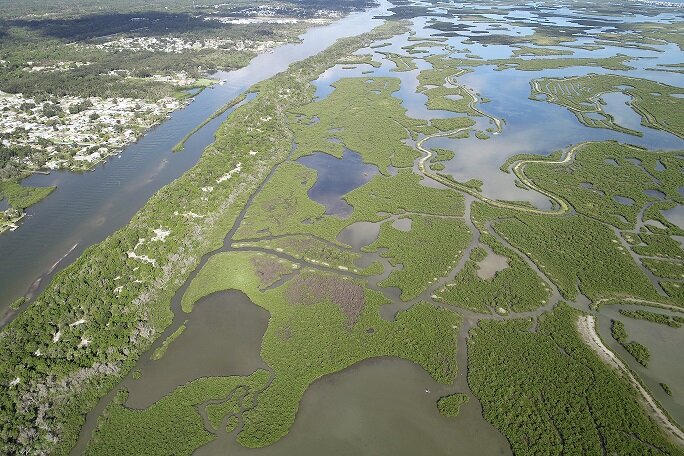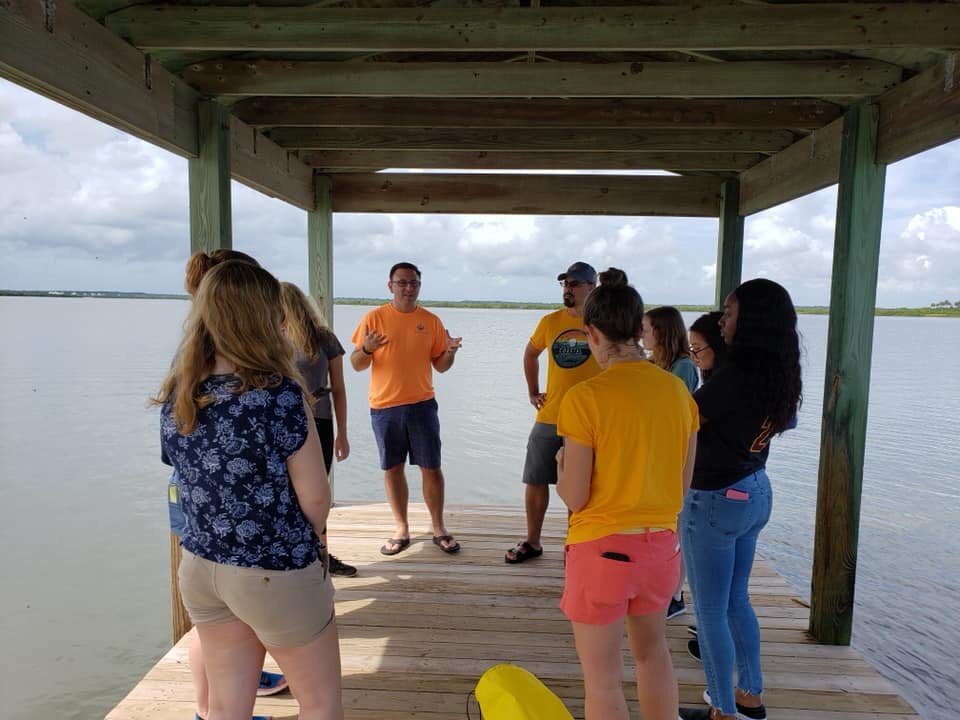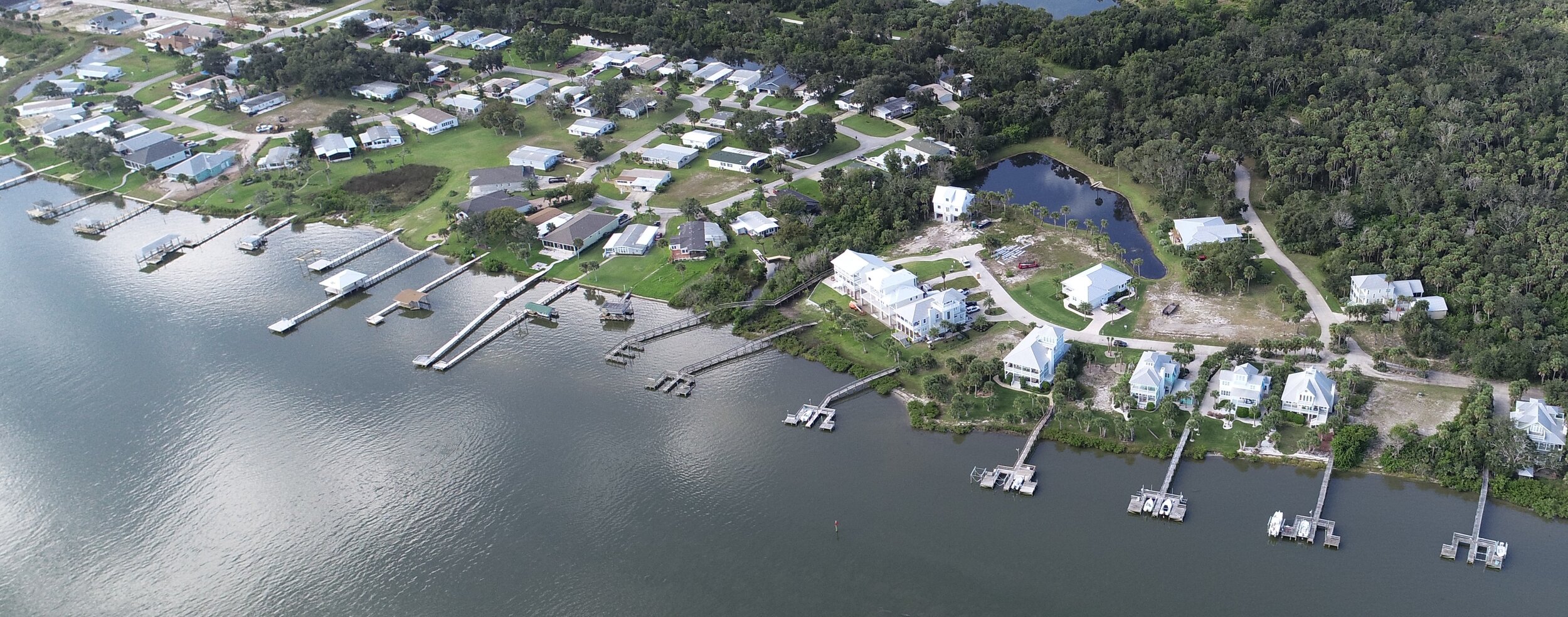Mapping Meaning in the Indian River Lagoon
INDIAN RIVER LAGOON - Anyone who has ever spent time in the Indian River Lagoon knows it is a special place. Whether relaxing on the shore and soaking in the silence, watching dolphins playfully frolic and leap about, or photographing one of the many wading birds that calls this place home, the first word I often think of to describe this place is “magical”. But you don’t have to take my word for it. Since February this year, the Citizen Science GIS Coastal Connections team has been making its way up and down Florida’s Indian River Lagoon – from New Smyrna Beach to Titusville – to talk to people about why the IRL means so much to them. Eighty-five people have enthusiastically spent their time talking with us during focus groups, and drawing on digital maps to show us where they like to spend time in the lagoon, and where they have seen signs of environmental problems. Incredibly, over 600 more people have gone online to put their meaningful places on the map!Why are we asking people about their emotional attachments in the Indian River Lagoon? It’s all part of a larger interdisciplinary project, funded by the National Science Foundation, about coastal restoration. The Indian River Lagoon is one of the most biodiverse estuaries in the northern hemisphere, yet fish kills, algal blooms, and other threats are putting this ecosystem at risk. We are asking people to tell us about their connections to the lagoon in order to understand local priorities for restoration and opinions about what restoration success should look like, from a social perspective. At the same time, other team members are measuring water flow, oyster recruitment, seagrass cover, and other ecological indicators of restoration success. One of our ultimate goals is to maximize restoration success from both social and ecological perspectives, and to integrate local knowledge into restoration planning.
Since February this year, the Citizen Science GIS Coastal Connections team has been making its way up and down Florida’s Indian River Lagoon – from New Smyrna Beach to Titusville – to talk to people about why the IRL means so much to them. Eighty-five people have enthusiastically spent their time talking with us during focus groups, and drawing on digital maps to show us where they like to spend time in the lagoon, and where they have seen signs of environmental problems. Incredibly, over 600 more people have gone online to put their meaningful places on the map!Why are we asking people about their emotional attachments in the Indian River Lagoon? It’s all part of a larger interdisciplinary project, funded by the National Science Foundation, about coastal restoration. The Indian River Lagoon is one of the most biodiverse estuaries in the northern hemisphere, yet fish kills, algal blooms, and other threats are putting this ecosystem at risk. We are asking people to tell us about their connections to the lagoon in order to understand local priorities for restoration and opinions about what restoration success should look like, from a social perspective. At the same time, other team members are measuring water flow, oyster recruitment, seagrass cover, and other ecological indicators of restoration success. One of our ultimate goals is to maximize restoration success from both social and ecological perspectives, and to integrate local knowledge into restoration planning. Even at this early point in our analysis, some big ideas are clear: Fishing culture and traditions are a huge part of the lagoon’s identity; Water quality is a major concern, especially its impact on recreation and human health; Causes of environmental problems in the lagoon are complex and connected. As we continue working through hundreds of pages of focus group transcriptions and even more geospatial data, we hope to uncover more spatial patterns about the places people care about and their priorities for restoration. We are also planning a pair of workshops in early 2019 to ask get community input about future sites for oyster restoration.We are incredibly grateful to the people who have generously shared their knowledge with us to this point, and we’re working hard to wrap up our focus groups and mapping activities by the end of the year to shift our attention toward analyzing and synthesizing the information that’s been shared with us. We look forward to moving ahead with the help and support of our community partners, and we will keep you posted about the exciting things to come!
Even at this early point in our analysis, some big ideas are clear: Fishing culture and traditions are a huge part of the lagoon’s identity; Water quality is a major concern, especially its impact on recreation and human health; Causes of environmental problems in the lagoon are complex and connected. As we continue working through hundreds of pages of focus group transcriptions and even more geospatial data, we hope to uncover more spatial patterns about the places people care about and their priorities for restoration. We are also planning a pair of workshops in early 2019 to ask get community input about future sites for oyster restoration.We are incredibly grateful to the people who have generously shared their knowledge with us to this point, and we’re working hard to wrap up our focus groups and mapping activities by the end of the year to shift our attention toward analyzing and synthesizing the information that’s been shared with us. We look forward to moving ahead with the help and support of our community partners, and we will keep you posted about the exciting things to come!
